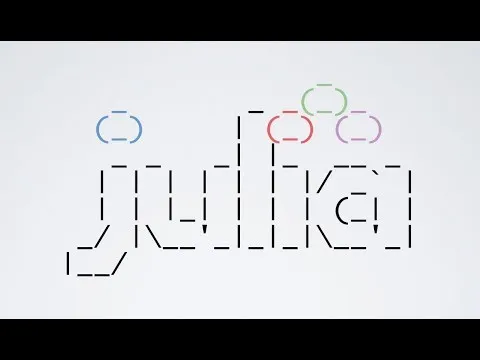
Julia Language Database JuliaDB 
JuliaDB is a database for the Julia language. It allows users to make selections, reductions, and groupings to calculate descriptive statistics. It also enables users to join two tables and import csv files. Additionally, it provides a tutorial on gradient descent. ▼
ADVERTISEMENT
Course Feature
![]() Cost:
Cost:
Free
![]() Provider:
Provider:
Youtube
![]() Certificate:
Certificate:
Paid Certification
![]() Language:
Language:
English
![]() Start Date:
Start Date:
On-Demand
Course Overview
❗The content presented here is sourced directly from Youtube platform. For comprehensive course details, including enrollment information, simply click on the 'Go to class' link on our website.
Updated in [February 21st, 2023]
What does this course tell?
(Please note that the following overview content is from the original platform)
Julia Language Database JuliaDB.
Selections in JuliaDB.
Reductions in JuliaDB.
Grouping in JuliaDB to calculate descriptive statistics.
Joining two tables in JuliaDB.
Importing a csv file in JuliaDB.
Gradient descent tutorial using Julia code.
Julia Statistics Package.
Julia Statistics Package.
Julia for medical statistics 2020 edition.
Julia plots using VegaLite.
Julia environments.
How to use Pluto notebooks and set Julia environments.
Complex numbers introduction using Julia.
Introduction to Euclidean vector spaces with Julia.
Tutorial on matrices with help from Julia.
Solving linear systems using elementary row operations with Julia.
Ordinary least squares tutorial using Julia.
Gram Schmidt process for QR decomposition using Julia.
Bootstrap resampling for confidence intervals and sampling distrubutions.
Estimating a p value for the difference in means between two groups.
F ratio sampling distribution under the null hypothesis using Julia.
Install Julia with Jupyter and Pluto notebooks and VS Code.
We consider the value of this course from multiple aspects, and finally summarize it for you from three aspects: personal skills, career development, and further study:
(Kindly be aware that our content is optimized by AI tools while also undergoing moderation carefully from our editorial staff.)
Learners can learn about the Julia Language Database JuliaDB, including selections, reductions, grouping, and joining two tables. They can also learn how to import a csv file, use the Julia Statistics Package, and create plots using VegaLite. Additionally, learners can learn about Julia environments, how to use Pluto notebooks and set Julia environments, and complex numbers introduction using Julia. They can also learn about Euclidean vector spaces with Julia, matrices with help from Julia, solving linear systems using elementary row operations with Julia, the Gram Schmidt process for QR decomposition using Julia, bootstrap resampling for confidence intervals and sampling distributions, estimating a p value for the difference in means between two groups, and the F ratio sampling distribution under the null hypothesis using Julia. Finally, learners can learn how to install Julia with Jupyter and Pluto notebooks and VS Code.
[Applications]
After completing this course, participants can apply their knowledge of Julia Language Database JuliaDB to their own projects. They can use selections, reductions, and grouping to calculate descriptive statistics. They can join two tables and import a csv file. They can use Julia code to perform gradient descent and use the Julia Statistics Package. They can also use Julia to plot using VegaLite and set Julia environments. They can use Pluto notebooks and VS Code to install Julia. They can also use Julia to understand complex numbers, Euclidean vector spaces, matrices, linear systems, ordinary least squares, QR decomposition, bootstrap resampling, confidence intervals, sampling distributions, p values, and F ratio sampling distributions.
[Career Paths]
1. Data Scientist: Data Scientists use JuliaDB to analyze large datasets and uncover trends and insights. They use JuliaDB to create predictive models and develop machine learning algorithms. They also use JuliaDB to create visualizations and reports to communicate their findings. As data becomes increasingly important in the business world, the demand for Data Scientists is expected to continue to grow.
2. Data Analyst: Data Analysts use JuliaDB to analyze data and create reports. They use JuliaDB to identify patterns and trends in data, and to develop insights that can be used to inform business decisions. They also use JuliaDB to create visualizations and dashboards to communicate their findings. As businesses become increasingly data-driven, the demand for Data Analysts is expected to continue to grow.
3. Machine Learning Engineer: Machine Learning Engineers use JuliaDB to develop and deploy machine learning algorithms. They use JuliaDB to create predictive models and develop algorithms that can be used to automate tasks. They also use JuliaDB to create visualizations and reports to communicate their findings. As machine learning becomes increasingly important in the business world, the demand for Machine Learning Engineers is expected to continue to grow.
4. Data Visualization Developer: Data Visualization Developers use JuliaDB to create visualizations and dashboards to communicate data insights. They use JuliaDB to create interactive visualizations and reports that can be used to inform business decisions. As businesses become increasingly data-driven, the demand for Data Visualization Developers is expected to continue to grow.
Course Provider

Provider Youtube's Stats at AZClass
Over 100+ Best Educational YouTube Channels in 2023.
Best educational YouTube channels for college students, including Crash Course, Khan Academy, etc.
AZ Class hope that this free Youtube course can help your Julia skills no matter in career or in further education. Even if you are only slightly interested, you can take Julia Language Database JuliaDB course with confidence!
Discussion and Reviews
0.0 (Based on 0 reviews)
Explore Similar Online Courses

Traveling for Business

UX & Design Resumes: Top Easy Fixes + Recruiter Insights

Python for Informatics: Exploring Information

Social Network Analysis

Introduction to Systematic Review and Meta-Analysis

The Analytics Edge

DCO042 - Python For Informatics

Causal Diagrams: Draw Your Assumptions Before Your Conclusions

Whole genome sequencing of bacterial genomes - tools and applications

Intro to the Queryverse a Julia data science stack

Intro to Julia tutorial (version 10)


Start your review of Julia Language Database JuliaDB